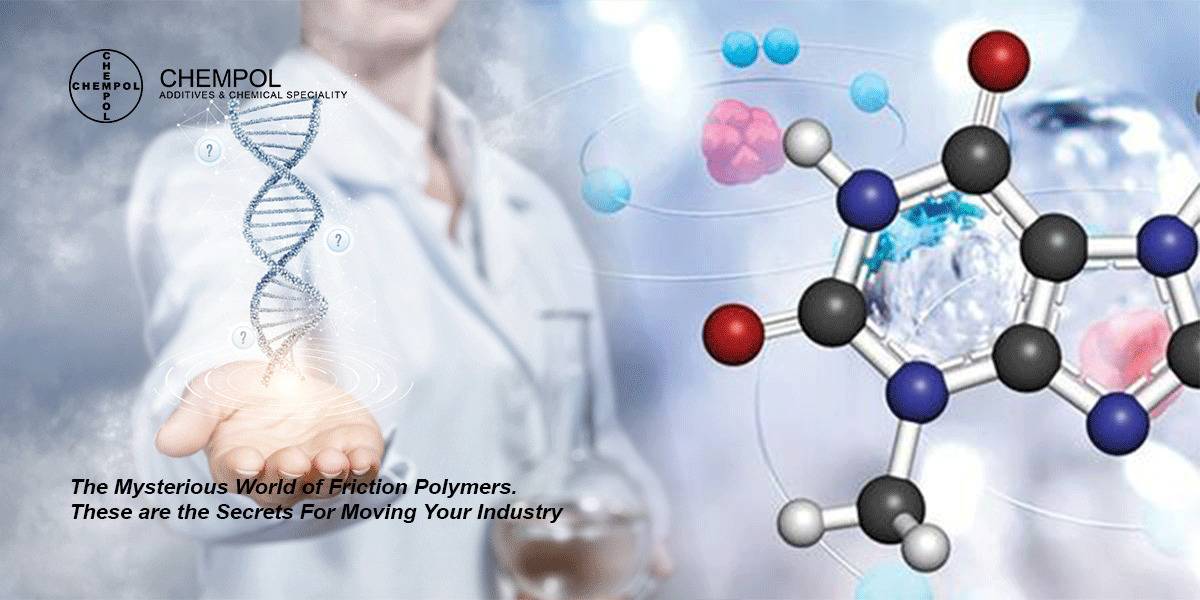
The Mysterious World of Friction Polymers. These are the Secrets For Moving Your Industry
In the dark depths of used oil samples, amidst the mixture of countless chemicals, there lies a fascinating phenomenon named polymers. These enigmatic molecules are key to understanding the complexity between wear and protection within mechanical systems. For decades, their formation has been a puzzle wrapped in a mystery, compelling tribologists (friction and wear scientists) with glimpses of their potential but stubbornly resisting a definitive explanation.
However, recent research offers a compelling new chapter in friction polymers. A paper presented at the joint ASME/STLE conference in Toronto, Canada, boldly proposes a fresh perspective on their origins. Instead of being mere byproducts of thermal degradation, these microscopic marvels arise from a unique chemical structure between mating surfaces under pressure. The critical element orchestrating this dance isn’t just scorching heat and the raw power of mechanical energy.
Tribochemistry
This concept, termed “tribochemical reaction,” introduces a paradigm shift in our understanding of friction polymers. It suggests that the very act of surfaces grinding against each other, the relentless ballet of friction, sparks a chemical metamorphosis, birthing these wear-resistant champions. Unlike the slow waltz of oxidation, known to create sludge and varnish – the dreaded foes of lubrication – tribochemical reactions forge polymers with swift precision, their dance fueled by the relentless pressure of moving parts.
But how do we distinguish them from the offensive sludge? The line, unfortunately, remains somewhat blurry. Both are high-molecular-weight beasts, born from the crucible of contact, but their effects couldn’t be more diametrically opposed. Friction polymers, the benevolent giants, stand guard against wear, shielding components from the gnashing teeth of friction. Sludge, on the other hand, clogs vital pathways, impeding lubrication and hastening the march of mechanical demise.
So, how can we decipher this cryptic language of wear debris? The Toronto study sheds light on a crucial clue: the influence of antioxidants. In traditional oxidation settings, these chemical substances defend against thermal onslaughts, extending the oil’s resistance to sludge formation. But under the tribochemical spotlight, a fascinating twist emerges. The formation of general industrial polymers outpaces the valiant efforts of antioxidants, suggesting a distinct origin story not governed by mere heat.
The Revelation Of A New Treasure

This revelation unlocks a treasure trove of insights for condition monitoring, the watchful eye that safeguards machinery. A sudden surge of friction polymers where they were once absent could whisper tales of impending trouble. It might signal a shift in the mechanical area, a crescendo of load and pressure, a stumble in the lubricating waltz, a misstep in film strength, or the unwelcome intrusion of contaminants.
By understanding the language of friction polymers, we gain a deeper understanding of the delicate balance between wear and protection within our machines. This knowledge empowers us to anticipate distress, intervene before the curtain falls on mechanical performance, and keep the intricate choreography of moving parts in perfect harmony.
However, the quest for friction polymers is far from over. The precise movement of the tribochemicals that led to their formation remains shrouded in the shadows. Future research promises to illuminate these secrets, unveil the true nature of this wear-fighting, and empower us to harness their power in the never-ending battle against friction.
And so, the use of friction polymers continues with scientific intrigue and real-world implications. As we delve deeper into their secrets, we inch closer to unlocking the full potential of lubrication, extending the life of machines, and ensuring the smoothness of motion in our ever-evolving world.
Exploration Of Tribology
For years, lubricant analysts for Industries have been captivated by the enigmatic friction Polymersfound in used oil. These molecules hold the key to extending machinery’s life, but their origins remain shrouded in mystery. Were they mere byproducts of heat or something more?
A recent breakthrough sheds light on them. Friction polymers, it seems, are not accidental creations of wear but rather the result of a unique chemical mixture – a “tribochemical reaction” – between surfaces under pressure. This reaction, fueled by mechanical energy, stands in stark contrast to the sluggish thermal degradation that creates troublesome sludge and varnish.
Unlike their villainous counterparts, friction polymers boast remarkable wear resistance. They act as shields, enabling smooth operation and protecting components from the relentless grind of friction. But how do we distinguish these champions from the sludges?
Both appear hefty in molecular weight, born from the crucible of contact. Yet, their effects are diametrically opposed. The key lies in antioxidants, the specialty chemicals usually effective against thermal assaults. But under the tribochemical spotlight, a surprise unfolds – antioxidant power is outmatched by the rapid formation of friction polymers, suggesting a different origin story, one not solely dictated by heat.
This revelation is a game-changer for condition monitoring in industrial applications. By analyzing wear debris, we can now listen to the whispers of friction polymers. A sudden surge could signal impending trouble, hinting at lubricant distress or unwelcome contaminants. Deciphering this language is our new weapon to predict and prevent wear, ensuring machinery operates smoothly throughout its lifespan. Industrial oil additives packages have been adjusted to incorporate this new technology, providing enhanced protection and performance for critical machinery.
The full story of the tribochemical dance remains to be unraveled, but future research promises to illuminate its intricate steps further. By unlocking the true nature of friction polymers, we unlock the potential for better lubricants, longer machine life, and a future where friction whispers, not roars.
Friction Polymers

In traditional oxidation scenarios, antioxidants act as chemical shields, delaying sludge formation. But under the tribochemical spotlight, a curious phenomenon emerges. The formation of friction polymers outpaces anti-oxidant efforts, hinting at a separate origin story, one not solely governed by heat.
This revelation holds significant implications for condition monitoring, the practice of safeguarding machinery by analyzing wear. A sudden surge in friction polymers could signal trouble, indicating changes in mechanical load, lubricant breakdown, or contamination. By understanding the language of friction polymers, we gain a powerful tool for anticipating and preventing wear, enabling us to keep the complex system of moving parts in perfect condition.
The journey to reveal the full secrets of friction polymers continues. Future research promises to illuminate the trouble of the tribochemical, allowing us to harness their power for improved lubrication and extended machine life. As we go deeper to find the new research, we pave the way for a future where friction is met with a smile, not a grind.
Find the best Polymer distributor for your lubricant needs. Chempol is your partner in supplying the best additives and polymers that boost your oil performance like never before.


